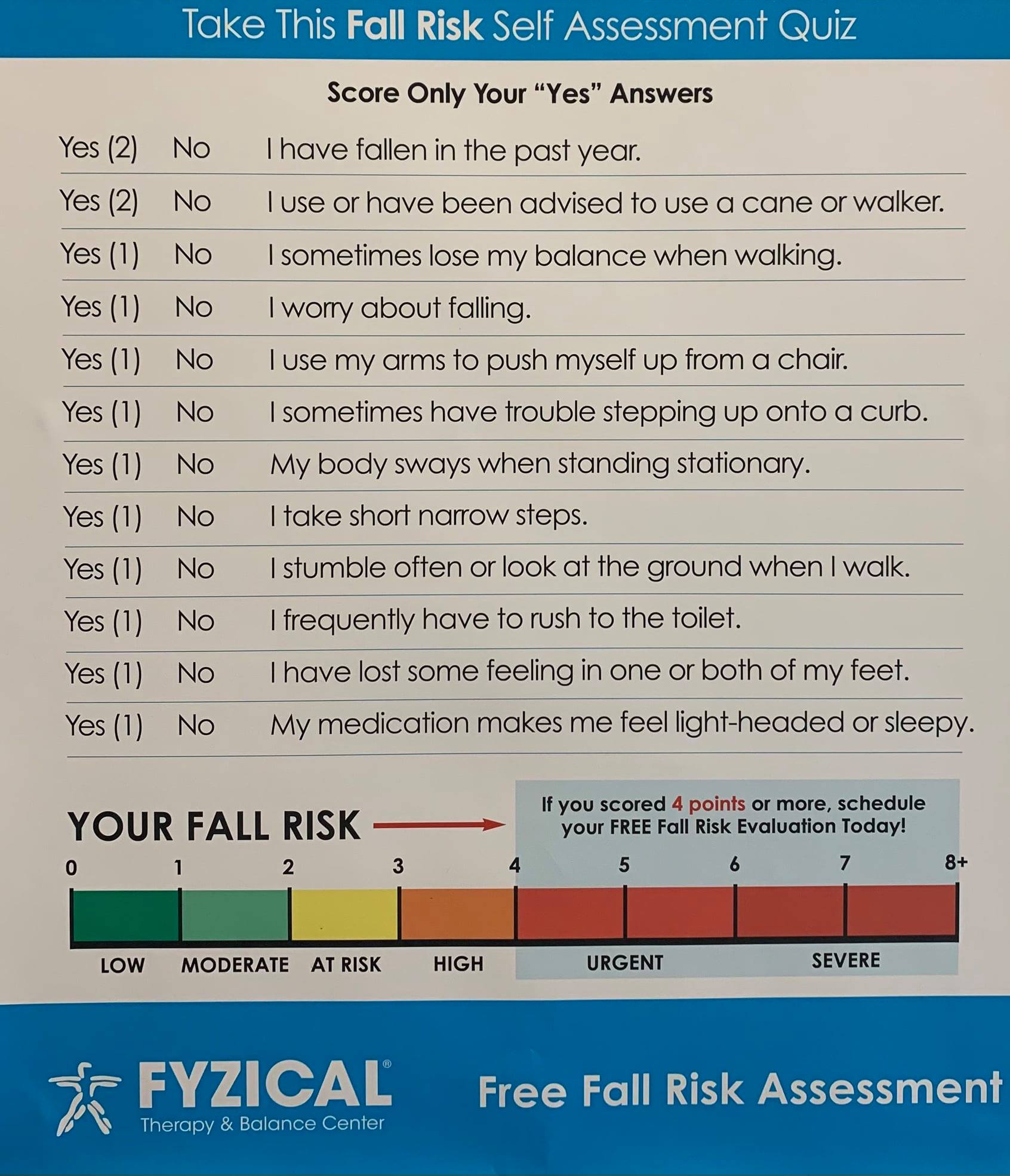5 Easy Facts About Dementia Fall Risk Explained
5 Easy Facts About Dementia Fall Risk Explained
Blog Article
The 30-Second Trick For Dementia Fall Risk
Table of ContentsMore About Dementia Fall RiskThe smart Trick of Dementia Fall Risk That Nobody is DiscussingIndicators on Dementia Fall Risk You Should KnowFacts About Dementia Fall Risk Revealed
A fall danger analysis checks to see how most likely it is that you will drop. The evaluation usually consists of: This consists of a series of questions concerning your total health and wellness and if you've had previous drops or problems with equilibrium, standing, and/or walking.Interventions are suggestions that may lower your risk of falling. STEADI consists of 3 actions: you for your risk of falling for your danger aspects that can be boosted to try to avoid falls (for instance, equilibrium troubles, damaged vision) to lower your threat of dropping by utilizing effective strategies (for instance, offering education and resources), you may be asked several questions consisting of: Have you dropped in the previous year? Are you stressed concerning falling?
You'll rest down once again. Your supplier will examine how much time it takes you to do this. If it takes you 12 secs or more, it may indicate you go to higher risk for a fall. This test checks strength and equilibrium. You'll being in a chair with your arms went across over your breast.
Relocate one foot midway forward, so the instep is touching the large toe of your various other foot. Move one foot fully in front of the various other, so the toes are touching the heel of your various other foot.
Excitement About Dementia Fall Risk
The majority of falls take place as a result of several adding factors; as a result, managing the danger of dropping begins with determining the variables that contribute to fall risk - Dementia Fall Risk. Some of the most pertinent threat elements include: Background of previous fallsChronic clinical conditionsAcute illnessImpaired gait and balance, reduced extremity weaknessCognitive impairmentChanges in visionCertain high-risk medications and polypharmacyEnvironmental aspects can additionally increase the danger for falls, including: Inadequate lightingUneven or damaged flooringWet or unsafe floorsMissing or harmed hand rails and get barsDamaged or incorrectly equipped devices, such as beds, mobility devices, or walkersImproper usage of assistive devicesInadequate guidance of the individuals living in the NF, including those who exhibit aggressive behaviorsA successful autumn danger monitoring program calls for a complete clinical assessment, with input from all members of the interdisciplinary team

The treatment strategy should additionally consist of treatments that are system-based, such as those read that promote a secure setting (proper lights, hand rails, get hold of bars, etc). The effectiveness of the interventions ought to be assessed periodically, and the care strategy changed as essential to mirror modifications in the autumn danger evaluation. Executing a loss threat monitoring system utilizing evidence-based finest method can decrease the prevalence of falls in the NF, while limiting the potential for fall-related injuries.
Dementia Fall Risk - Truths
The AGS/BGS standard suggests screening all grownups matured 65 years and older for fall risk yearly. This screening contains asking patients whether they have actually fallen 2 or more times in the past year or sought clinical focus for a loss, or, if they have not fallen, whether they over at this website really feel unstable when walking.
Individuals that have dropped once without injury ought to have their equilibrium and gait assessed; those with gait or balance problems must get extra assessment. A background of 1 fall without injury and without gait or equilibrium problems does not necessitate further assessment beyond continued yearly autumn threat screening. Dementia Fall Risk. A fall danger analysis is called for as part of the Welcome to Medicare assessment

Some Known Incorrect Statements About Dementia Fall Risk
Documenting a falls history is one of the quality indications for loss avoidance and administration. Psychoactive drugs in certain are independent forecasters of drops.
Postural hypotension can usually be reduced by minimizing the dose of blood pressurelowering drugs and/or stopping medications that have orthostatic hypotension as a negative effects. Use above-the-knee support tube and copulating the head of the bed elevated may additionally minimize postural decreases in blood stress. The suggested components of a fall-focused physical exam are displayed in Box 1.

A Yank time better than or equal to 12 seconds recommends high fall risk. Being incapable to stand up from a chair of knee height without utilizing one's arms indicates raised autumn risk.
Report this page